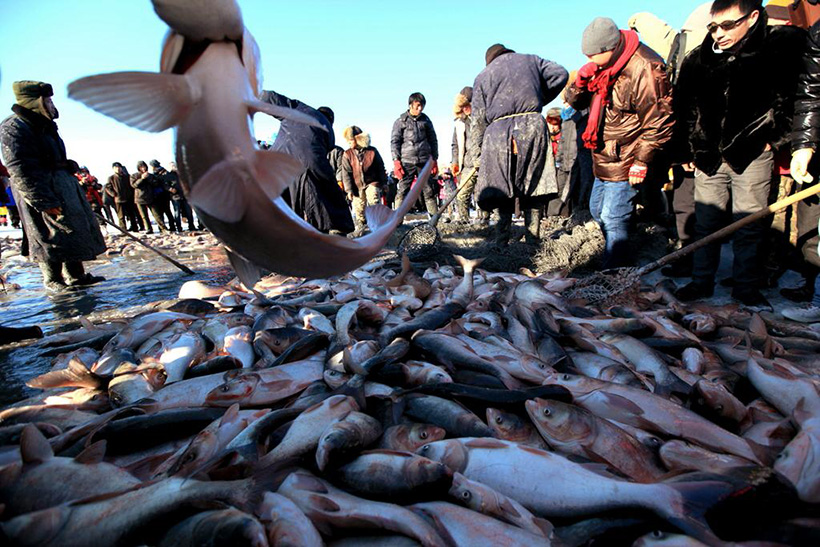Ancient Koguryo Kingdom Capital Cities & Tombs
Located in and around the city of Ji'an, Jilin province, People's Republic of China, Capital Cities and Tombs of the Ancient Koguryo Kingdom was designated as a cultural World Heritage Site in 2004, qualifying as such under the first five of the six criteria for cultural heritage sites.
The site includes archaeological remains of three cities: Wunu Mountain City, Guonei City and Wandu Mountain City and 40 tombs: 14 tombs are imperial, 26 of noble families. All belong to the Koguryo culture, named after the dynasty that ruled over parts of northern China and the northern half of the Korean Peninsula from 277 BC to AD 668. Wunu Mountain City is only partly excavated. Guonei City, within the modern city of Ji'an, played the role of a 'supporting capital' after the main Koguryo capital moved to Pyongyang. Wandu Mountain City, one of the capitals of the Koguryo Kingdom, contains many vestiges including a large palace and 37 tombs. Some of the tombs show great ingenuity in their elaborate ceilings, designed to roof wide spaces without columns and carry the heavy load of a stone or earth tumulus (mound), which was placed above them.
Capital 1 - Wu'nyu Mountain City
Located on the mountain north of Huanren County, Liaoning, the Wu'nyu Mountain City is a well-preserved site of historical and cultural significance. Founded in 37 B.C., the city was the first capital of the Ancient Koguryo Kingdom in northeast China, among the over 100 existing mountain city sites of the Kingdom along the Yalu River. Koguryo was an influential border ethnic group in northeast China during the Western Han Dynasty (202 B.C.-9 A.D.) and Tang Dynasty (618-907). Many historical remains and relics have been uncovered throughout the city.
Capital 1 - Guonei City
Guonei City and Wandu Mountain City were also capitals of the Koguryo Kingdom. These areas are now part of Chinese territory but during its creation, belonged to Koguryo Kingdom, an ancient Korean dynasty. Guonei City, within the modern city of Ji'an, played the role of a supporting capital after the main Koguryo capital moved to Pyongyang.
Capital 2 - Wandu Mountain City
Wandu Mountain City contains many vestiges including a large palace and many tombs. Wandu Mountain City also influenced the construction of later capitals built by the Koguryo regime. The capital cities of the Koguryo Kingdom represent a perfect blending of human creation and nature whether with the rocks or with forests and rivers.
Tombs
The site includes archaeological remains of 40 tombs which were built by Koguryo (37 BCE – 668 CE) that was founded in northern China and later extended into the northern half of the Korean Peninsula. Some of the tombs have elaborate ceilings, designed to roof wide spaces without columns and carry the heavy load of a stone or earth tumulus (mound) which was placed above them. The tombs, particularly the important steel and a long inscription on one of the tombs, shows greatness of early Korean culture on Koguryo. The paintings in the tombs, while showing artistic skills and specific style, are also an example of strong influence from various cultures. The tombs represent a masterpiece of the human creative genius in their wall paintings and structures. Since these are the tombs of the Kings of Koguryo, Ancient Korean Dynasty, these tombs are recognized as the Heritage of Korea.
Useful Harbin Travel Tips
Top Harbin Tours
- 5-day Harbin Ice Ski Chagan Winter Fishing Festival Tour

- 4-day Harbin Ice & Snow World Festivel Ski Tour
- 2-day Harbin Ice City Relax Tour
- 7-day Harbin Chagan Lake Jilin Changchun Tour
- Harbin One-day Private Tour for Ice & Snow World
- 6-day Harbin Yabuli Ski & China Snow Town Tour
- 3-day Harbin Ice Festival Tour
- 5-day Hot Harbin Winter Festival Yabuli Skiing Tour
- 5-day Harbin Train to Yabuli Ski Tour
- 3-day Harbin Ice Snow Festival Family Tour














